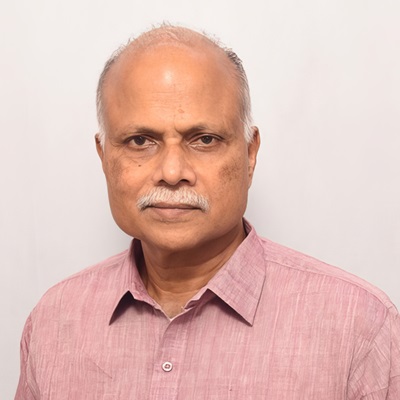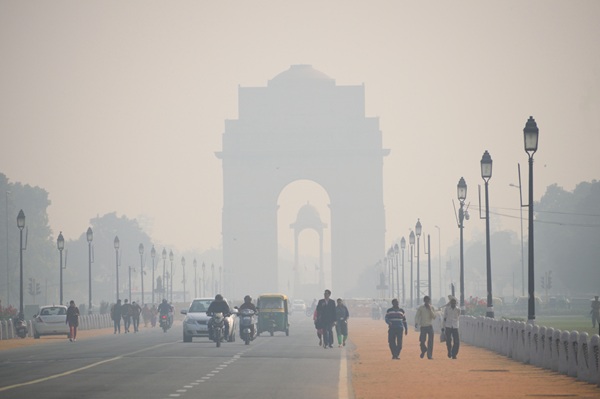.png)

T.K. Arun, ex-Economic Times editor, is a columnist known for incisive analysis of economic and policy matters.
August 28, 2025 at 5:59 AM IST
India’s wellness industry is booming, with PWC estimating its size at ₹490 billion, growing at a compound growth rate of around 16%. Fitness centres, yoga studios, Zumba dance classes, personal trainers, health food, and athleisure clothing proliferate. A section of the population is really taking their health and fitness into their own earnest hands, even as another section is feasting on newfound prosperity and growing obese.
As society prospers, and the middle-middleclass and the upper-middleclass swell, along with the middles of the members of the middleclasses, the burden of disease shifts from communicable diseases to lifestyle diseases, such as cardiovascular disease, chronic pulmonary disease, diabetes and cancer.
Doctors prescribe healthy diets. Actresses age gracefully and turn into lifestyle guides wearing trainers and unflagging smiles, to dispense advice on what to eat, how long to sleep, and how much to exercise. You open your e-commerce site to buy some salted peanuts, and venture to some peanut butter and ads that target you as a health nut fill your browsing experience for the rest of the day.
All these have one common theme: you are in charge of your own health and wellness. If you are responsible, you would make the right choices, exercise regularly, cut down on alcohol and sweets, steer your diet clear of saturated fats and ultra-processed sins. If you are sloppy, you will suffer, and so will your family, even if life insurance will mitigate a part of the suffering.
But is this right? Are we personally responsible for our well-being? This is ideology, not fact. We live in a particular physical and social environment, and these set the limits to how much you can, on your own, extend your lifespan or enjoy good health. If you are serious about your health, stop gazing at your navel — or more likely, struggling to catch a glimpse of your own navel without the aid of a mirror — and look at the system in which you live, and seek improvements in it.
Consider some of the most egregious examples of health determinants outside your control. The quality of air and water, to start with. If the Air Quality Index of your locality consistently verges on the hazardous, as it does for many residents of South Asia, there is only so much you can do to protect your lungs with the help of air purifiers or choosing to stay clear of the not-so-great outdoors.
When Lee Kuan Yew set out to make Singapore a modern state, he set one yardstick: the water from a Singaporean tap should be fit to drink. Few cities in Asia have achieved this mark. So, even if you have a water purifier for your drinking water, you still end up bathing, washing and doing the dishes in water that E coli and other microorganism are proud to call home. Your resolve to jog 6 km a day does not change this reality.
Is your town planned for segregated business and residential use, and are the two kinds of spaces separated by distances that are too long for walking? Most people would commute by vehicle. But some would choose to walk, if town planning permitted that luxury. Even if your city is pleasant for cycling six months a year, if there are no separate cycling lanes or if lane enforcement is weak, you will never cycle around town. People can do that in Amsterdam, without worrying about being knocked dead by the next novice driver dreaming of Formula One victories in their cycle lane.
Are there open spaces for kicking a ball around in the evening, or taking a brisk walk in the morning? Or is every square inch of available space covered in concrete and dedicated to some specific public use, when not cornered by some private owner? Do young people have the option of hanging out except virtually, tethered to their respective smart devices?
Even the food you eat is not entirely your choice. If a child grows up eating fast food at school and ultra-processed snacks at home, the chances are that its BMI would always be in the high-risk zone. Ideally, the school could offer students a healthy, nutritious meal, whether free or for purchase at the canteen. Regulation could force manufacturers to flag unhealthy ingredients of packaged foods on the packaging. Are such ideal options available?
Do you live in a part of the world where microplastics are present in the breastmilk that an infant consumes? If your answer is in the negative, that is only because you are ignorant. Plastics are essential, all talk of banning plastics is essentially anti-people. But we need proper ways to dispose of plastic, including sites filled with bacteria that can decompose any kind of plastic, not just the biodegradable variety. We have bred bacteria that can clean up oil slicks. We can find bacteria to digest plastic as well.
Does your health insurance incentivise regular check-ups, cover gym memberships or yoga classes? Does your healthcare system concentrate on the curative part of the deal, or does it stress fitness and check-ups?
How much stress do you face at the workplace? Does your employer expect you to work 70 hours a week, or ape the Chinese office worker’s 9-9-6 schedule – 9am to 9pm six days a week? Are you starved of companionship? Do religious shindigs and self-centred celebrants at loud parties rob you of sleep? Do your blood vessels carry more cortisol and adrenaline than dopamine and endorphins?
You are more than what you eat and then fail to burn off in its calorific entirety. Your health is determined by a whole lot more than the supplements you diligently pop, the exercise schedule you maintain, and the doctoral visits you make.
Do ask what you can do for your country, but do not fail to ask what the country can do for your health. Collective choices on a range of things govern your health as much as your own personal choices. And you must have a view on what these ought to be.




